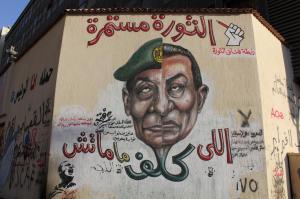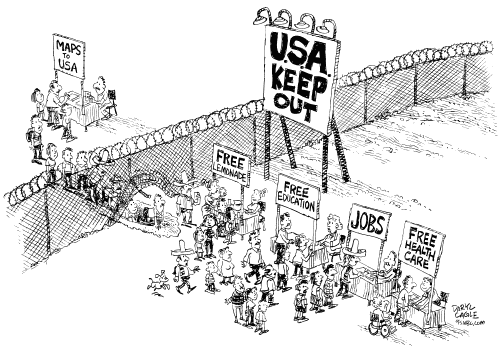Electronic Disturbance
In “Electronic Disturbance: An Interview” one of the first actions Dominguez engages in, is what he called a “butt-in”. The context of the world usually refers to intruding upon or interrupting someone or something. In the case of the interview, Dominguez describes how he and others jumped over the fence of the governor’s home and pulled down their pants with whatever comments they wanted painted on their butts, slamming them against the window. The butt-ins were an act of tactical disturbance in order for people to question and hopefully get an answer of whether there was a cure for AIDS and the emergence of the various tactics was known as ACT UP.
Art as Resistance

This piece of graffiti is just one of many that was created during peaceful protesting in Tahrir Square. The various protests also called for an initiative for artists to paint graffiti on concrete blocks that authorities installed. This particular graffiti depicts the demanding of the handover of power to civilians and the end of military rule.
Borderhacks
This photo correlates to the understanding of immigration in Raley’s “Border Hacks: Electronic Civil Disobedience and Politics of Immigration” as the group DoEAT posted new messages on signs along the U.S.-Mexican border meant to warn of immigrants crossing the highway. Activists replaced the yellow “warning signs” with words saying, “free market” & “now hiring”, reminding drivers why families might be running in front of their vehicles.
This second image is hands down my favorite because what Raley calls this method of activism is a “border hack” that seeks to defamiliarize the signs of everyday life and in this context, immigration. This image is a form of tactical art to make known there is a major problem with the U.S.-Mexico border; the fence of the border is open to commodities but closed to people.




